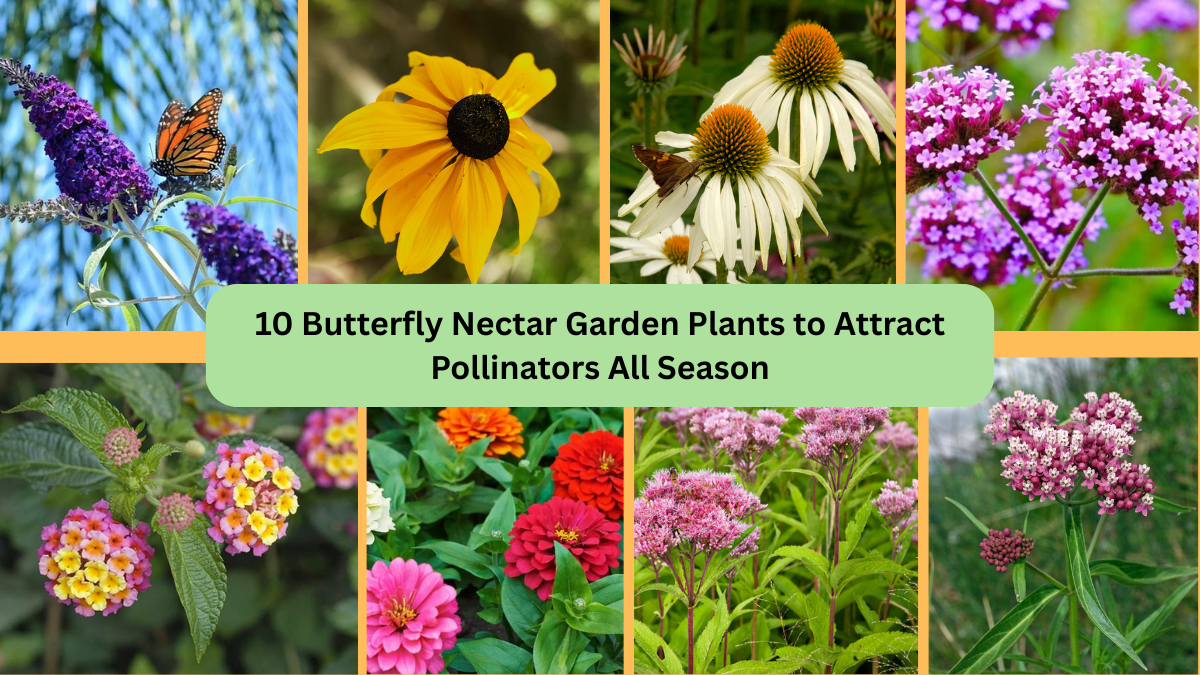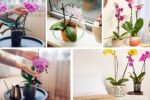Creating a butterfly-friendly garden is one of the most rewarding things you can do for the environment and your own enjoyment. Butterflies are not only beautiful, but they’re also vital pollinators that help your flowers, fruits, and vegetables thrive. To support them, you need plants rich in nectar that bloom throughout the growing season. Here are 10 butterfly nectar plants that keep your garden buzzing with color and life from spring through fall, turning your landscape into a pollinator paradise.
1. Butterfly Bush (Buddleja davidii)
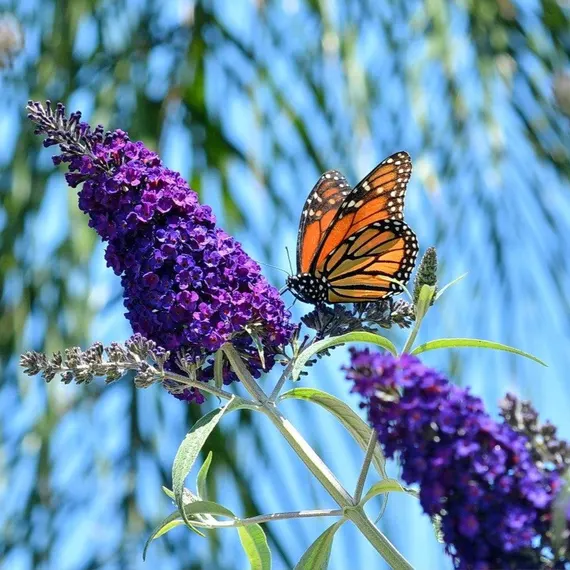
A magnet for butterflies with long, fragrant flower spikes.
Few plants are as synonymous with butterfly gardening as the butterfly bush. It produces arching panicles of tiny, tubular flowers in purple, pink, white, or blue from midsummer to fall. Each cluster is rich in nectar, attracting not only butterflies but also hummingbirds and bees. This shrub thrives in full sun and well-drained soil, and many modern cultivars are compact, making them perfect even for smaller spaces. Deadheading encourages continuous blooms well into fall.
2. Lantana (Lantana camara)
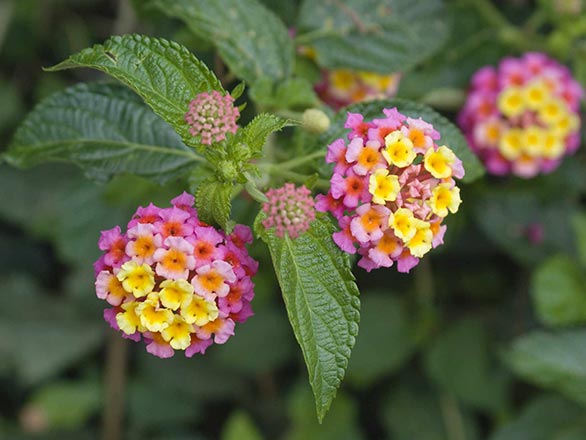
Colorful clusters with nonstop nectar.
Lantana’s vibrant, multi-colored flower clusters are irresistible to butterflies, bees, and hummingbirds. Blooming continuously from late spring until frost, lantana is both heat- and drought-tolerant. Its strong fragrance and brightly colored blooms make it an eye-catching addition to garden beds or containers. Available in trailing or upright forms, lantana is versatile and easy to grow, offering reliable nectar through the hottest parts of the season.
3. Coneflower (Echinacea purpurea)
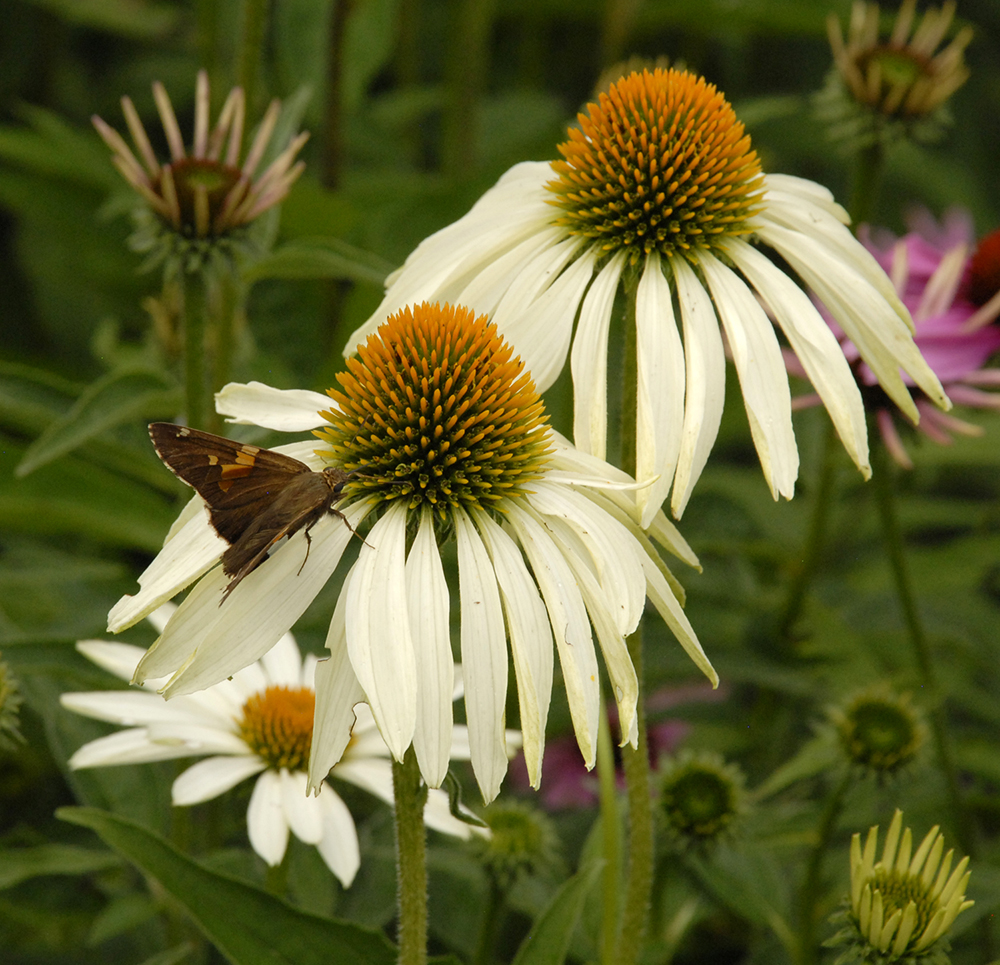
Native beauty with bold blooms.
Coneflowers are North American natives that produce large, daisy-like flowers in shades of purple, pink, white, and even orange or yellow. Their raised, cone-shaped centers are rich in nectar and attract a wide variety of butterflies, including monarchs and painted ladies. Blooming from early summer into fall, they also provide seed heads that birds love. Echinacea thrives in sunny spots with average soil and is both drought-tolerant and low-maintenance.
4. Zinnia (Zinnia elegans)
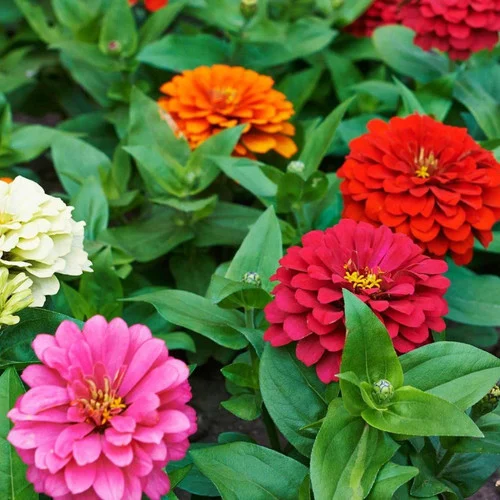
Fast-growing and full of color.
Zinnias are one of the easiest annuals to grow, offering a kaleidoscope of colors in almost every shade imaginable. Their wide, open flowers are a favorite of butterflies, especially monarchs and swallowtails. These sun-loving plants bloom rapidly from seed and continue flowering all summer with regular deadheading. Their upright, branching nature makes them ideal for pollinator borders or cutting gardens, and their long-lasting blooms keep butterflies coming back.
5. Joe-Pye Weed (Eutrochium purpureum)
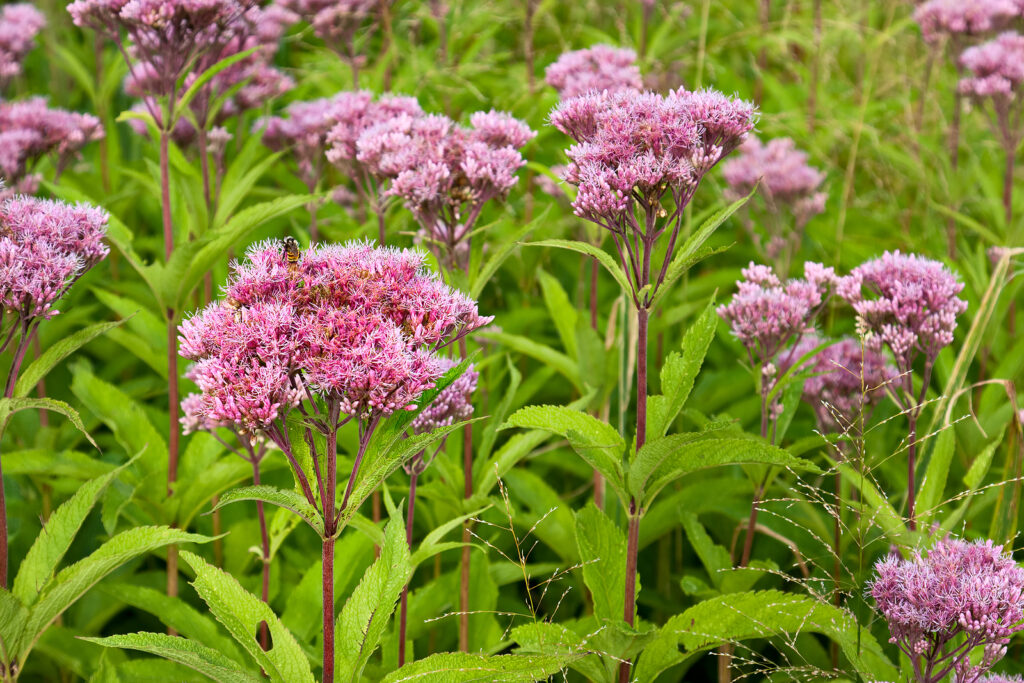
Towering blooms that butterflies adore.
A staple of native wildflower gardens, Joe-Pye weed is a tall, statuesque perennial with dome-shaped clusters of mauve-pink flowers. Blooming from mid to late summer, it’s a major draw for butterflies especially monarchs and tiger swallowtails. Despite its name, this plant is elegant and adaptable, thriving in moist to average soil and partial to full sun. Joe-Pye Weed adds height, texture, and pollinator power to any butterfly garden.
6. Milkweed (Asclepias spp.)
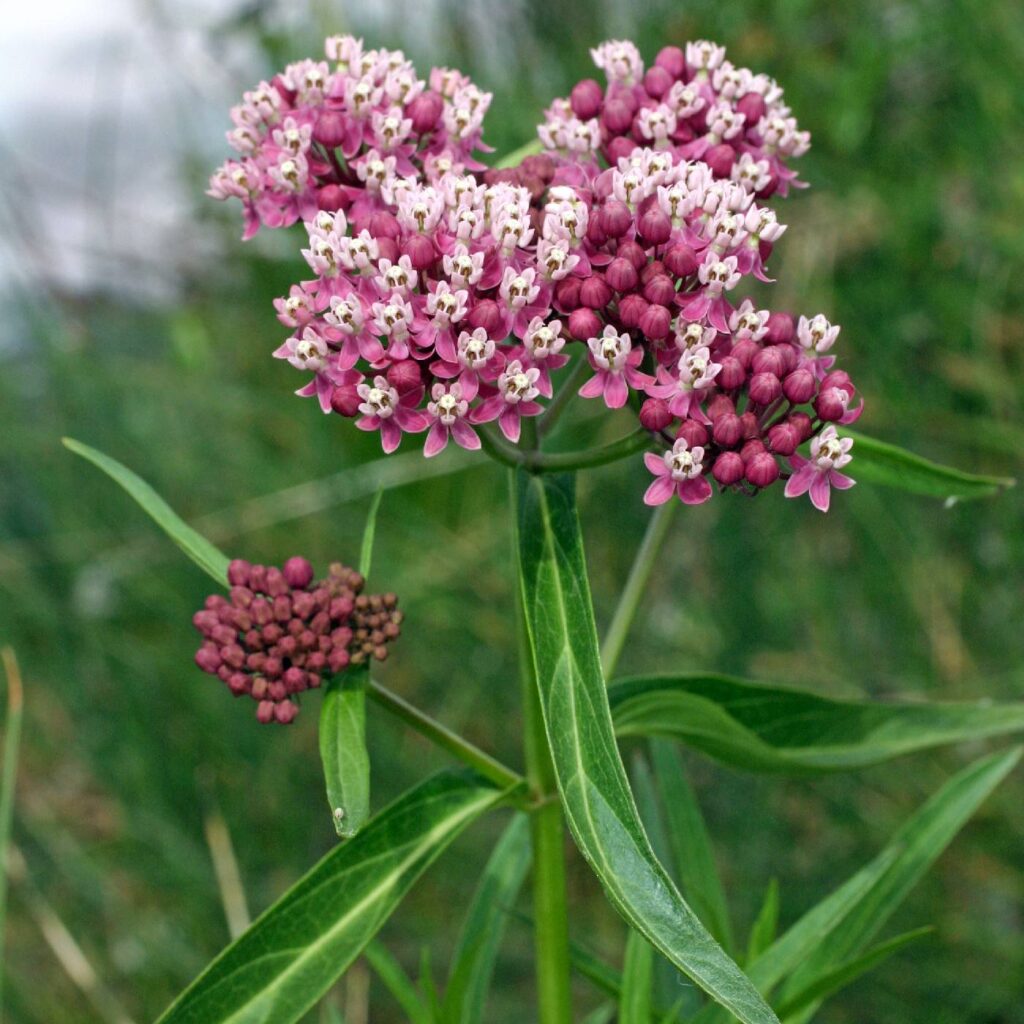
Essential for monarchs and rich in nectar.
Milkweed is not only the sole host plant for monarch caterpillars, but its flowers are also nectar-rich, attracting a broad range of pollinators. Varieties like common milkweed (Asclepias syriaca), swamp milkweed (A. incarnata), and butterfly weed (A. tuberosa) offer blooms from late spring through summer in pink, orange, or white. These hardy perennials thrive in sun and poor soil and play a critical role in supporting monarch populations across North America.
7. Black-eyed Susan (Rudbeckia hirta)

Golden blooms that last for months.
With their cheerful yellow petals and dark centers, black-eyed Susans are iconic summer bloomers. Their nectar-rich flowers are highly attractive to butterflies, bees, and other beneficial insects. Blooming from midsummer into fall, these hardy natives tolerate drought and poor soils and require very little care. Plant them en masse for a bold visual impact and a steady buffet for pollinators.
8. Verbena (Verbena bonariensis)

Airy stems topped with nectar-rich blooms.
Verbena bonariensis, or tall verbena, is a favorite in butterfly gardens for its delicate yet striking appearance. Slender, upright stems hold clusters of lavender-purple flowers high above the ground, drawing in butterflies like a beacon. It blooms from midsummer until frost and thrives in full sun with well-drained soil. Its see-through quality makes it ideal for mixing among other perennials, providing structure without blocking the view.
9. Sedum ‘Autumn Joy’ (Hylotelephium telephium)
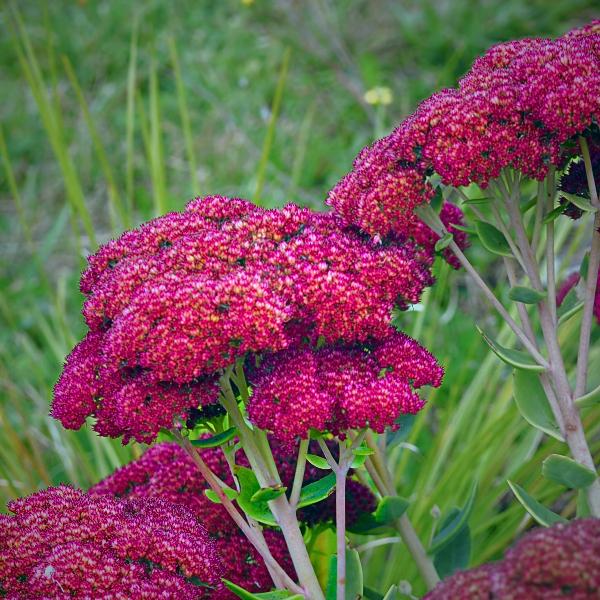
Late-season blooms for migrating butterflies.
As summer winds down, sedum ‘Autumn Joy’ provides a crucial nectar source. Its succulent leaves give way to flat-topped flower heads that begin pink and deepen to copper in fall. These blooms attract butterflies when few other flowers remain, helping sustain migrating species like monarchs. Tough and drought-resistant, sedum is perfect for sunny borders, rock gardens, or container plantings offering both beauty and ecological benefit.
10. Phlox (Phlox paniculata)
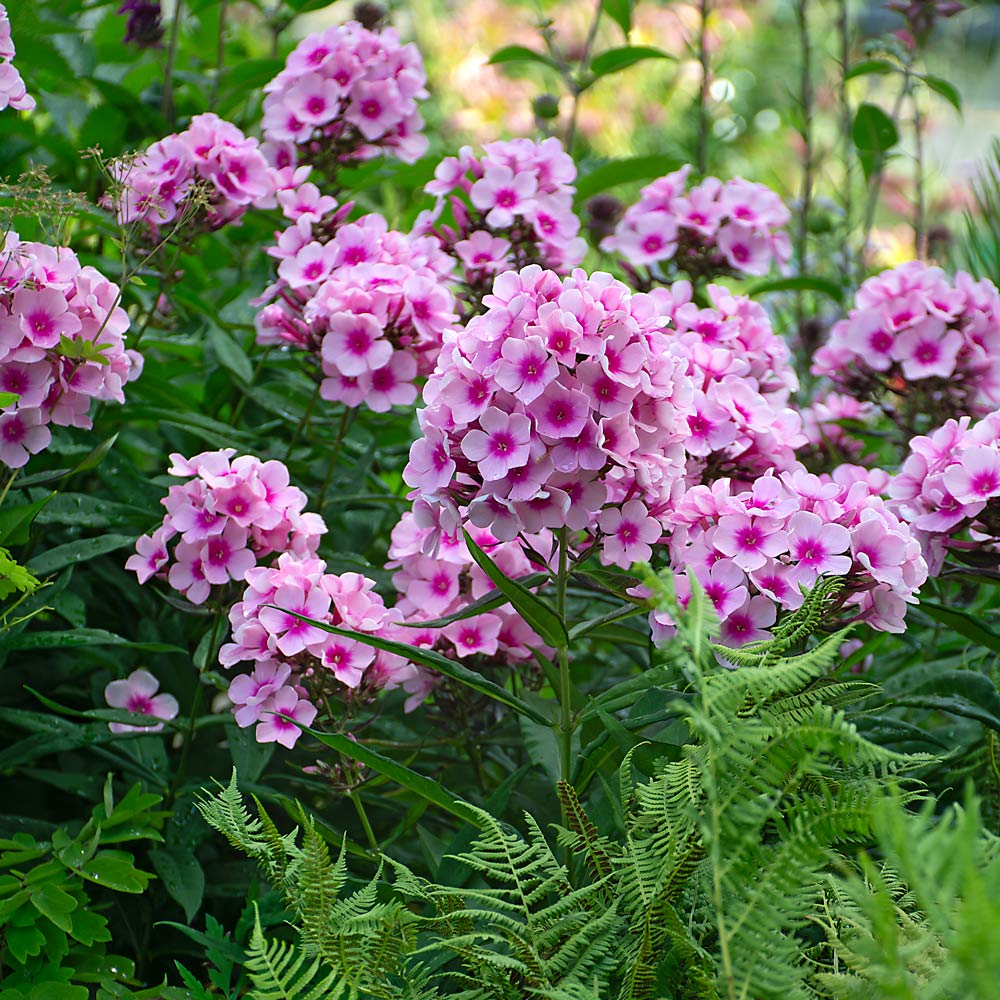
Fragrant clouds of blooms.
Garden phlox brings color, fragrance, and nectar to the midsummer garden. Its large, multi-flowered clusters range from white to pink to deep purple and are irresistible to butterflies. Phlox thrives in rich, moist soil and full sun, though it can tolerate some shade. Regular deadheading will extend its bloom period, ensuring a continuous source of nectar. It pairs well with coneflowers and black-eyed Susans in traditional butterfly garden designs.
